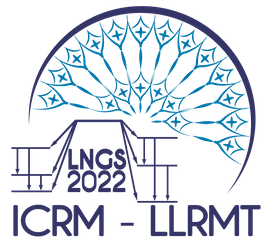Speaker
Description
Monitoring and inspection of radioactivity in foods resulting from the nuclear accident at Fukushima Daiichi NPS in 2011 have been reinforced by local governments based on an inspection plan in accordance with the guidelines decided by the Nuclear Emergency Response Headquarters. The guidelines have been reviewed as necessary to ensure rational and efficient inspections with considering trends in monitoring, new scientific findings, or the lifting of shipping restrictions and other restrictions. In this research project, we are developing evaluation methods for the inspection system regarding radioactivity in foods and obtaining scientific knowledge for revising the guidelines.
The conventional test method for radioactive materials in foods using gamma-ray spectrometry using Ge-detector ensures reliability by homogenizing food samples and filling them into a set measuring container and making the conditions as identical as possible to those of a reference source to be compared. As alternative scintillation spectrometer using NaI(Tl) or CsI detectors are also widely used for screening test of radio-cesium in foods. In both cases, however, even if no radioactive materials are detected, the samples cut up for measurement cannot be shipped. In such a situation a new type of device that is named as “Non-destructive radioactivity measurement device (hereinafter NDRMD)” has been developed to measure radioactive cesium in bagged whole samples without sample preparation technique so that all products can be inspected in advance of shipping. However, in order to ensure reliability as one of the food inspection systems, it is necessary to conduct a detailed analysis of each individual sample for which testing efficiency can be improved by adopting this method.
In order to make it clear, following tasks are carried out in this project:
1) Uncertainty determination for screening of radio-cesium in foods without sample preparation procedure: The uncertainties in the measurement of the radioactivity of whole foods using the NDRMDs were determined by comparing the results of the measurement of food samples by the NDRMDs with the results by the calibrated Ge detector using the conventional sample machining procedure. Details will be shown in another presentation #68.
2) Determination of radioactivity distribution in foodstuffs: To evaluate effect of localization of radioactivity in samples on activity measurement without sample preparation procedure, radioactivity distribution in foodstuffs were determined by the imaging plate technique with a special sample treatment procedure and the conventional gamma-ray spectrometry.
3) Uncertainty evaluation in gamma-ray spectrometry arising from heterogeneity of radioactivity in foods: Uncertainties arising from heterogeneity of radioactivity in sample on the conventional gamma-ray spectrometry were determined by use of a Monte Carlo simulation with data of activity distribution obtained from real food samples.
In our presentation, outline of our whole research project for food monitoring post Fukushima accident situation will be represented.

